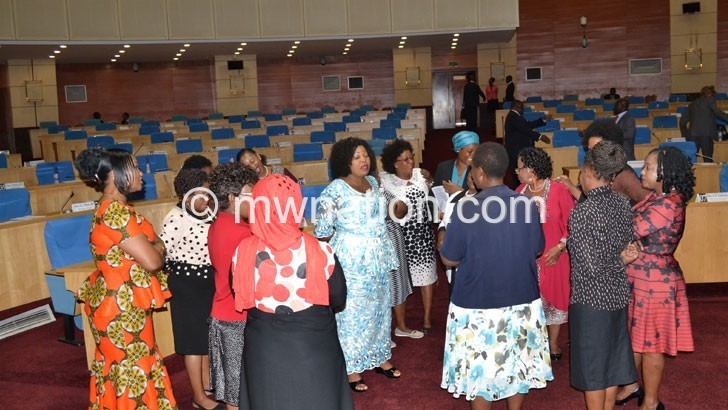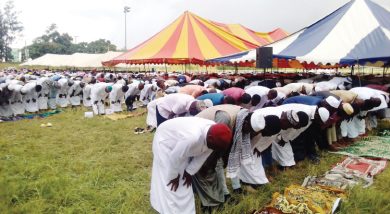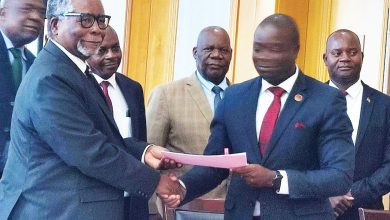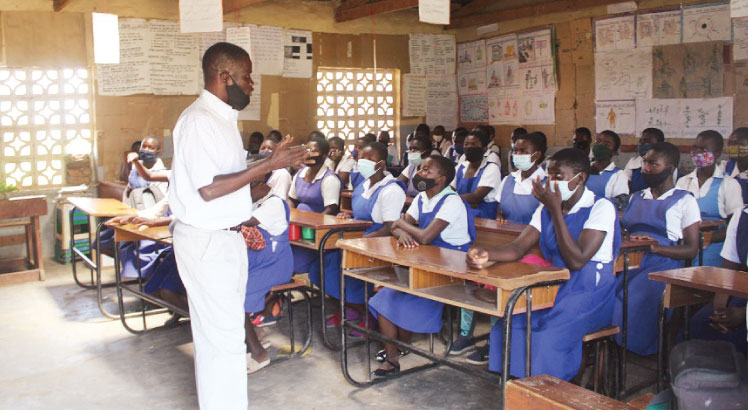Bumpy road to gender parity
The country is on the cusp of losing the gains she has made to increase the number of women in elected positions.
Tallies of candidates approved by Malawi Electoral Commission (MEC) show that the majority of women will contest as independents.

This could be a sign that political parties remain male-dominated set-ups and more needs to be done to do more to create the room for female contenders.
In 2014 elections, women’s representation in political positions nosedived to 16 percent—down from 43 percent in 2009.
The see-saw plays out in the 193-seat Parliament where the population of women was just 10 in 1994, 18 in 1999 and 27 in 2004.
The slide from 43 in 2009 to 32 in the previous election seems likely to worsen unless the independents carry the day.
With just two months before the polls in which Malawians will elect a president, members of Parliament and ward councillors, the battle to achieve equal numbers of men and women remains elusive.
Recently, the NGO-Gender Coordination Network (NGO-GCN) analysed the sexes of faces listed to be on the ballot in the next 76 days and women are lagging behind.
The headcount shows that out of the 304 women vying for parliamentary seats, 123 are independents.
NGO-GCN coordinator Innocent Hauya says female politicians could be frustrated by “the glass ceilings” that exist in political parties.
He states: “Most of them lost in party primary elections due to a number of factors, including institutionalised systematic gender barriers in political party participation.
“Most of the political parties did not take the necessary steps to ensure that their primaries were conducted in a free and fair manner.”
Nancy Tembo, an independent candidate in Lilongwe South West Constituency, resolved to go it alone after Malawi Congress Party (MCP) dramatically declared her a loser in contentious primaries.
“I won the primaries, but somehow my opponent was the one that was picked as the MCP representative, so the people encouraged me to run as independent. I believe I have the support of the majority of the voters,” she said.
She is convinced that it will not be difficult to outrun her contenders.
“If I had not done well in the primary elections, I would not have gone on with my candidature. I would have known that I have no support,” she explains.
A nationwide campaign is underway to achieve equal numbers of men and women in decision-making positions in line with the Southern African Development Community (Sadc) Protocol on Gender and Development.
The country signed up to the 2008 regional agreement, with the Gender Equality outlawing either sex from holding more than six in every 10 public positions.
While the faces of female parliamentarians is decreasing, their representation in Angola, Mozambique, Namibia, South Africa and Tanzania, hovers over 30 percent.
“If women had party backing, we would have been achieved this target. But the analysis indicates that the success rate will not be very different from the 2014 scenario, which was below the Sadc requirement,” says Hauya.
In fact, women will not be on the ballot in 44 out of the 193 constituencies.
“The fact that many women have shown interest is good. By and by, we will meet the Sadc requirement,” he states.
But meeting the Sadc protocol on gender equality will be an uphill climb, according to Centre for Multiparty Democracy (CMD executive director Kizito Tenthani.
“If you look at the percentage of all the candidates — female against male—you will see that it is lopsided. So we have to look at the entire candidature of all the women and then see what strategies need to be put in place. The focus has to be on the political parties and this has to start immediately after the elections, not waiting until the next election in 2024,” he explains.
Tenthani reckons political parties are the main vehicle for participation in politics and main recruiting agents in a multiparty democracy.
“Going forward, people should reflect more on how they can engage the political parties to enhance the accessibility of women in their structures,” he said.
Concurring, Institute for Policy Interaction executive director Rafiq Hajat called for a change of attitude.
He explains: “I think what we are seeing now is a resistance to the change that is required by reality. The reason why most women are standing as independents is that they did not succeed in party primaries — because of the patriarchal mindset.
Until we change the very nature of our society—until we can become enlightened and liberated from the norms of yesterday and start living in the real world today—we will continue facing this problem and we will continue undermining women who are actually the true asset and future of society.”
However, government and non-governmental organisations (NGOs) have stepped up the push to turn the situation around.
Among others, the change agents, with funding from the 50:50 Campaign Management Agency, have been providing training and campaign material to women vying for various positions in the forthcoming polls.
Hauya asked the electorate to vote based on issues, not regional lines and party colours as was the case in previous elections.
“We need to do a lot about changing people’s perceptions so that they vote based on issues. That is the only way women can win as most of them were wanted by their constituents but their parties let them down, which forced them to run as independents,” said Hauya.
And Tembo observes that increasing women representation is not just about distributing material things.
“People are looking for someone who will be concerned with their issues and look for ways to address them. It’s about who you are and what you stand for. If people have confidence in you, that is what matters,” she said.
People’s Party, with a female presidential candidate in former president Joyce Banda, has the highest number of women on its ticket.
About 31 percent of candidates in the orange party are women—and it is only rivaled by the ruling Democratic Progressive Party (DPP) with 26.5 percent.
Women constitute 22.5 percent of UTM party candidates and 15 percent for MCP. This means none of the parties have achieved the 50:50 requirement stipulated by the Sadc Protocol, let alone the less ambitious target in Gender Equality Act.





